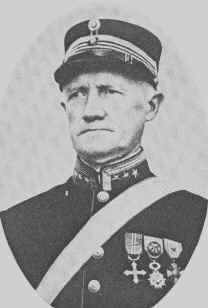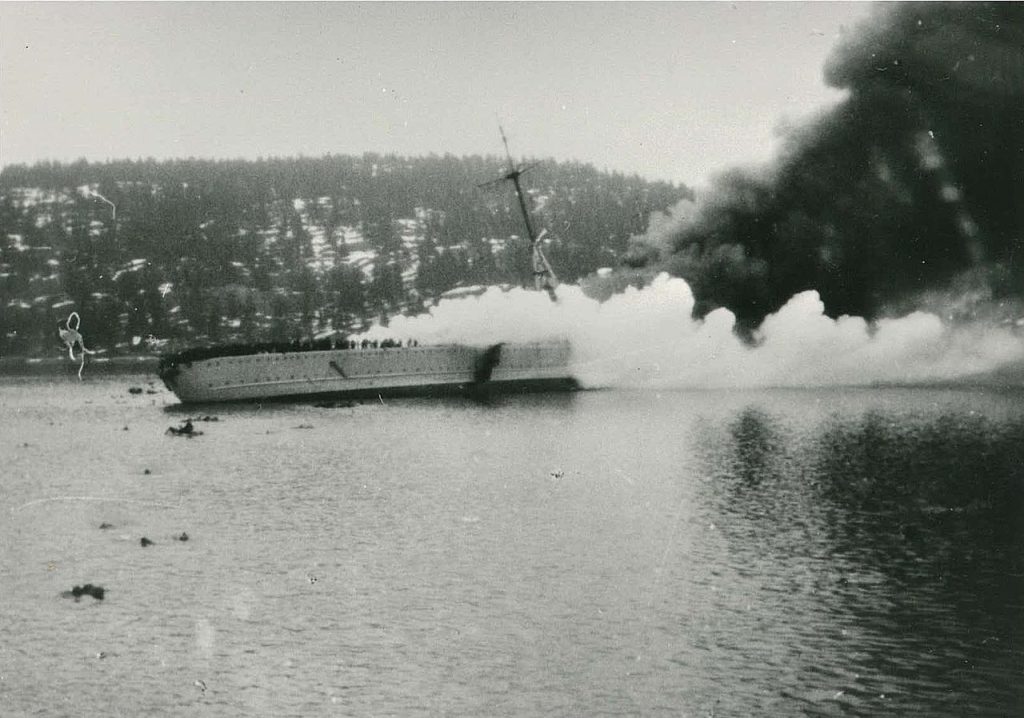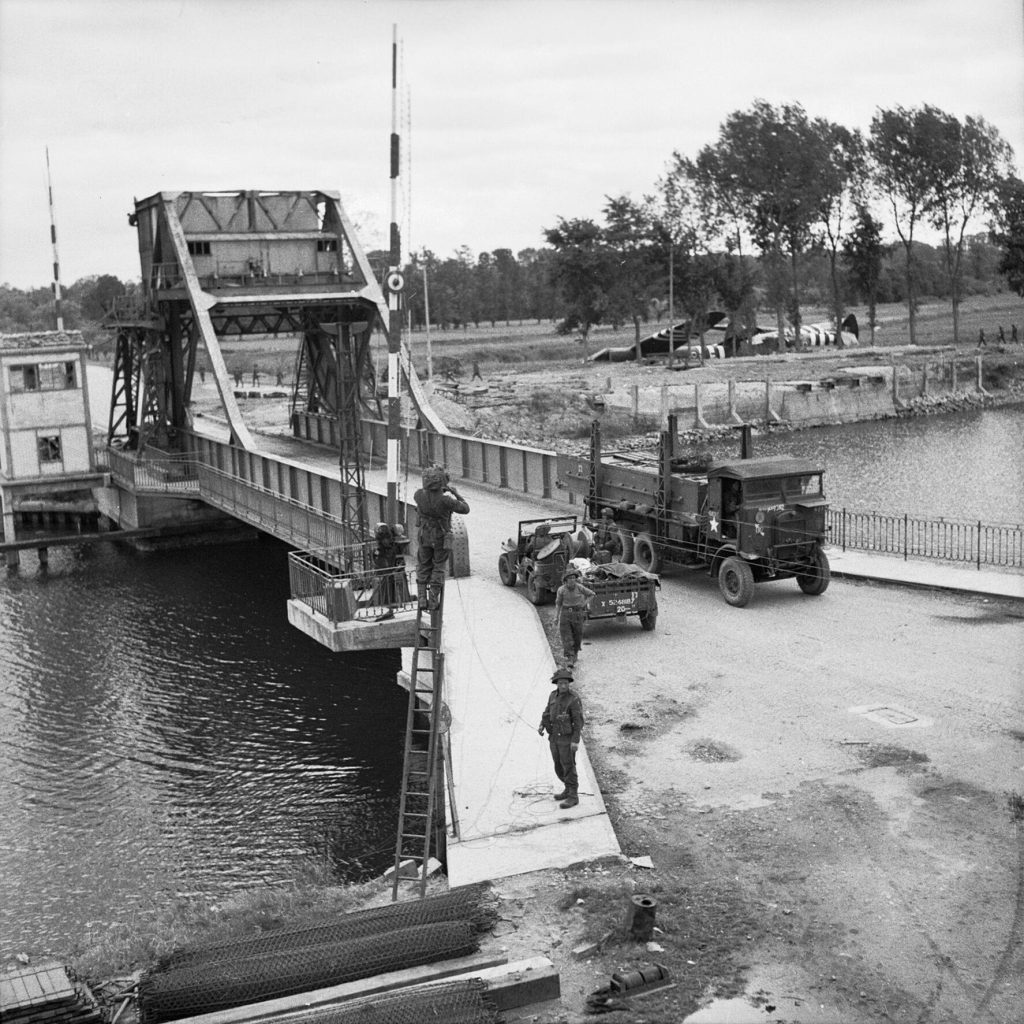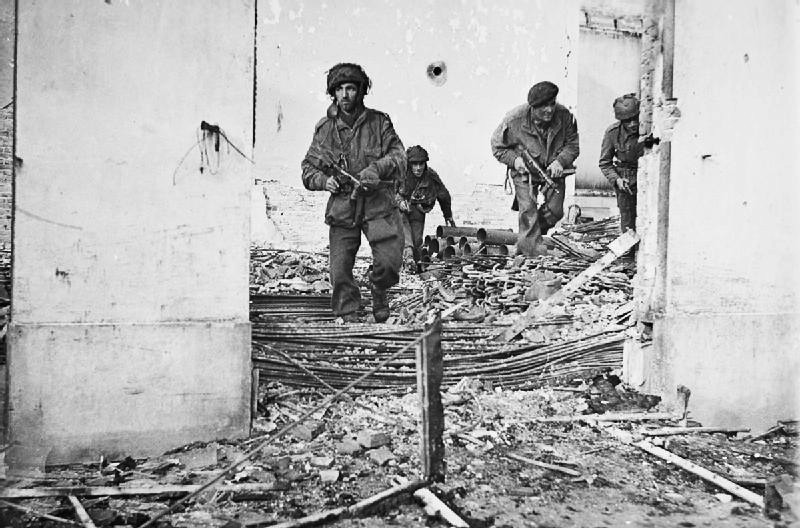Surprise attacks – lessons to be learnt from World War 2
Even though Sweden did not participate in the Second World War, the war’s progress was carefully monitored by that country, and particularly worrying was the German attack on Denmark and Norway on April 9th 1940. In Norway the first incursion had taken place with relatively small units, which allowed the Germans to conceal their intentions, as relatively small preparations were required.
Nor had Norway mobilised its conscript army when Germany set in motion Operation Weserubung on April 9th. The name of the operation indicated that it was a matter of an exercise, and as major units would not be involved, it could not be determined whether a genuine attack was taking place or not. Although the Norwegian defence was on its guard, it comprised only the standing army and those conscripts who were currently being trained. The Germans used their fleet to audaciously sail straight into Norwegian ports and set ashore soldiers, whilst German paratroops were being landed on airfields outside Oslo.
By means of surprise, nerve and also luck with the weather, German destroyers were able to surprise and torpedo Norway’s most powerful warships, the old British-built armoured coastal defence ships Eidsvold and Norge, off Narvik. However events could have turned out very differently had the armoured ships had a little more warning and the foggy conditions not prevented them from supporting each other.
This type of attack on another sovereign state is usually called a surprise attack, although the Swedish term, “Strategiskt överfall”, is more specific and implies an operation aimed to surprise an opponent on the strategic level, compared to a general surprise attack that can actually mean any kind of attack from one made by a few soldiers to a large operation.
Excursus – Swedish military terminology
The Swedish term “överfall” is partially analogue to the term ambush, which in swedish military jargon is usually referred to as “eldöverfall”. A direct translation would be something along the lines of “fire ambush”, which the specific meaning being an ambush conducted using the fire from different weapon systems, sometimes combined with mines and artillery fire to cause damage and disruption to enemy units on the march. It is a short, sharp action usually followed by a swift regroup from the area. But if successful it can according to doctrine go over into “överfall” which means that the ambusher follow up initial success by assaulting the target in order to defeat the enemy, capture prisoners, documents and equipment and drive away survivors. Hence, in the swedish military it is important to distinguish between the two actions, since the first is meant to mostly delay an enemy with as little risk to the ambusher as possible and can be used by small units against much larger ones. The second, “överfall”, is only to be conducted if you have a clear advantage and superiority and must not be mixed up with “eldöverfall”.
From here on, the term Surprise attack will be used analogus to the swedish term “strategiskt överfall”. It is signified by the attacker, with relatively small forces, striking at key points in the attacked country in order to paralyse that country’s leaders, create chaos and prevent the country from getting organised and mobilize and putting up efficient resistance in general. An important part of this strategy is to be able to conceal the preparations, which is easier if as few units as possible are engaged.
Nevertheless, in 1940 the Norwegians were naturally perfectly aware that they could well be drawn into the War, just not exactly at that moment.
Denmark was completely surprised and gave up after just a few hours of fighting. In this case the German attack had worked perfectly. It was only a matter of time before they would also conquer Norway.
It is extremely difficult to provide protection against a strategic attack, particularly if the country is dependent on mobilising conscripted troops in order to provide long term protection. However mobilisation takes time and means that the whole of society must reorganise, in addition being an expensive process. Such action may also be seen as provocation and hinder possible diplomatic solutions. This makes it a difficult decision for any government that is faced with it.
A little tuft of grass can overturn a huge load
However when you look below the surface of the German successes, one can see how risky a strategic surprise attack can be, and how little it takes for it all to go wrong. At Narvik the margins favoured the Germans, so there was great profit. But in the area of Oslo, the most important target, the situation was completely different.
Few Norwegian soldiers were on the scene when the German paratroops began to rain down over Fornebu airport, but most of them sprang into action once the first shock had passed. A solitary machine gunner killed several of the parachutists before they reached the ground, and the only reason the Norwegians finally stopped fiercely resisting was lack of ammunition. A greater number of Norwegian soldiers and a larger supply of ammunition could have turned the tide, or at least delayed the Germans.
The situation in the Oslo fjord turned out differently. A powerful German fleet, led by the heavy cruiser Blücher, used the cover of darkness and poor weather to get past the outer Norwegian coastal fortresses. However a single Norwegian patrol boat, the Pol III, spotted the approaching ships, and when the first of the unexpected foreign ships failed to identify itself the Pol III opened fire with its single gun. Although this had virtually no effect on the much larger German vessel, the gunfire and signal rockets showed that something was afoot. In the end, as a final act of defiance, the commander of Pol III rammed the german destroyer closest to her. But since the Norwegians had not managed to seed the area with mines, the Germans, headed by Blücher, continued advancing along the Oslo fjord.
As they had succeeded in getting past the outer coastal fortresses, the Germans considered that there was little more to threaten their advance. The very last point of defence was the Oscarsborg fortress, an old construction that was no longer really part of the harbour defences, and was serving as a training facility for the Norwegian coastal artillery. It was equipped with old, but very powerful cannons, and the commandant of the fortress, retired Colonel Birger Eriksen, had suspected that something was amiss. With the aid of students from the coastal artillery school and some newly signed on conscripts, two of the old 11 inch cannons, christened Aron and Moses could be manned. In addition, the old but well hidden torpedo batteries could work as a final surprise for any attacker. Eriksen had telephoned to the equally retired Commander Andreas Andersen and asked him to take command of the torpedo battery. It was a motley crowd, to say the least, of young and only partly trained officers and men led by two retired officers who constituted the last line of defence for Oslo.

Colonel Birger Eriksen, commanding officer of the Oscarsborg fortress.
Eriksen had been asked to return to service to fill a vacancy. As commanding officer he was now forced to make a number of quick decisions. He understood that there was no time to wait for orders from a higher authority. He would himself have to decide what to do. He already had information that the outer fortresses were fighting with hitherto unknown ships, and that they were approaching Oslo, it was obvious to him that an enemy attack was in progress.
When Blücher came into view just over a mile away it was time to act. Andersen knew the fjord and its distances so well that when the distance measuring equipment showed the target to be a certain distance away he could correct it from his own memory, thus giving the correct distance to his guns. The Germans believed that Oscarsborg was not armed, and they did not shoot since they still believed that the Norwegians would not dare to shoot. Even Colonel Eriksen seems to have struggled with the decision briefly, before giving the final order. “Either I’ll get a medal or be court-martialled! Fire!”
Eriksen’s judgement of the distance was correct and both 11 inch shells hit the target, causing massive destruction and setting the cruiser on fire. Now even a couple of the smaller coastal battery guns opened fire against the Germans. Blücher fired back but her heaviest cannons stayed quiet, because one of the incoming shells had cut off their power supplies. The gun crews at Oscarsborg took shelter, as their guns had no armour protection. Now the batteries at Kopås and Husvik opened fire against Blücher and hit her repeatedly, among other things damaging her rudder. The cruiser continued to advance, and passed the torpedo battery. The torpedos dated from 1906 and were not particularly powerful, but Commander Andersen knew everything about them. Blücher was a perfect target and two torpedos were fired and hit. Blücher began to sink, and the trailing German ships turned back to retire to the outer fjord, although not before the battery at Kopås had also damaged the armoured cruiser Lutzow.

The heavy cruiser Blücher is on fire and sinking.
This meant that the German parachute troops who had landed at the airfield outside Oslo would be forced to take the city by themselves.
The actions of Colonel Eriksen at Oscarsborg showed the importance of having commanders who would dare to make their own decisions. A similar incident took place a day later when a German unit of over a hundred paratroops who were searching for the Norwegian Government and its Royal Family encountered a Norwegian unit at Midtskogen at night between April 9th and 10th. The Norwegians consisted of 20-30 soldiers of the Royal Guard and about 60 conscripts and volunteers from the local shooting club. These defenders were only equipped with repeating rifles and two machine guns, of which one stopped working after its first shot. Despite having superior weapons and a numerical advantage, the Germans were forced to withdraw temporarily after their commander was killed. They therefore failed to capture the Norwegian Government and its Royal Family.
The Germans suffered heavy losses, but the most important result was that the sinking of the Blücher delayed the attack on Oslo and allowed the Norwegians enough time to evacuate the Cabinet, the Government and the Royal Family, who all fled north. They were also able to take with them the 50 tons of Norwegian gold reserves, which were later transferred to Great Britain. The Norwegian Government were able to lead the resistance and guide the fighting for another eight weeks.
The end result was that the German strategic attacks against Denmark and Norway finally succeeded. However this success was dearly bought and above all caused serious losses to the German navy during the battles. In hindsight it was shown that on several occasions the results hung by a thread and the losses were greater than expected by the Germans. In particular, if the Norwegians had had a little more luck, for example in the Narvik fjord, everything could have ended very differently.
Crete in 1941 and Pegasus bridge in 1944
Where the German paratroops were in the ascendant, they were very successful. They were seen to be very effective in Belgium and the Netherlands in 1940, where among other things they neutralized the Belgian fortress of Eben-Emael by brazenly landing in gliders on its roof and destroying the fortress’s heavy guns. However in the Netherlands a number of paratroops were captured when the Dutch commanders were able to gather together sufficient local troops and counterattacked before the parachutists had time to assemble their force.
The largest German airborne was the capture of Crete in 1941, but even though the Germans finally succeeded in taking over a number of airfields so they could bring in reinforcements, the defenders had engaged and shot down several transport aircraft before they could land. Due to the fact that the Allied defenders hesitated for one day before counterattacking, the Germans were able to strengthen their positions and gather together sufficient reinforcements.
Despite their eventual victory, the German airborne forces suffered severe losses and subsequently never again embarked on large scale attacks. Conversely the Allies, in particular Great Britain and the USA, created their own airborne units that would in the end be used to perform several surprise operations.

The Pegasus bridge after it had been secured. A glider can be seen on the right in the background.
Perhaps the most well known was the capture of what came to be known as the Pegasus bridge, in connection with the invasion of Normandy on June 6th 1944. If the bridge had been destroyed, this would have made it difficult for the British troops to advance from the invasion beaches, so it had to be captured intact. A small force, carried in gliders, landed beside the bridge and stormed it before the German guards had time to react and blow it up. This small group managed to hold the bridge against counterattacks, even from tanks, until the troops that had arrived by sea could join them and help to hold the bridge. By this time their ammunition was almost used up, and it is doubtful that they could have held out for much longer. So the plan had been successful.
Market Garden and the limitations of an airborne assault
The Allies had to some extent learned from mistakes made by the Germans, but in the case of Operation Market Garden in 1944, mainly the British and Polish airborne troops suffered severe losses when they landed in an area where two German armoured divisions were resting after previous battles. The plan was to secure a number of important bridges in a surprise attack with paratroops so that the Allied armour could carry out a surprise offensive in the Netherlands to reach Germany quickly.
The operation was characterised by a tight and optimistic timetable and an underestimation of the opposing side, which in the end led to a strategic failure and major losses by the engaged forces. The British 30th Army Corps were supposed to relieve the parachute troops and secure the captured terrain. However the rapid advance that this required assumed in principle that German resistance would only be slight, which most certainly was not the case. Several bridges were taken, but the main force did not reach the most northern and important, at Arnhem, in time. The British airborne troops that were assigned to capture the bridge were put down over a large area and only one battalion succeeded in moving forward and occupying one side of the bridge. Before 30 Corps could arrive, that battalion was forced to capitulate when its ammunition ran out and the position could not be held.

British paratroops moving through a ruined district.
The Arnhem operation showed once again how risky airborne operations can be, especially if vital information is ignored, which was the case here, namely reports of German armour in the area. Armoured formations are the greatest threat to airborne troops, as the latter are not equipped with heavy armour and only have a limited ability to carry with them anti-armour weaponry. However it also showed how relatively small German units that stood their ground instead of retreating in front of a more powerful force were able to force 30 Corps to reduce the speed of their advance and get the situation under control.
An often repeating theme in respect of airborne operations is that it is most important to quickly ensure that the units involved are reinforced, either by further airborne troops or by a ground-based force that is able to break through the enemy front line and reach the area held by the airborne units. When the ammunition runs out, it doesn’t matter how well-trained the soldiers are.
It also shows how vulnerable operations are if the defenders react quickly and do their best. Airborne troops have difficulty in quickly retrieving more ammunition and nor can they replace their losses or send their wounded out of the area.
It is necessary for the airborne troops to quickly secure the area so that reinforcements with heavier weapons, more ammunition and other stores can be flown in. In the case of defenders, it is a case of fighting as hard as possible, even if in the short term they are not strong enough to completely defeat the airborne besiegers. This is to win time, make it more difficult for the attackers to resupply and reinforce, and force them to use up valuable ammunition that cannot be replaced. For every minute that the battle proceeds, this is time for the defenders to bring in stronger forces to battle against the airborne troops.
In the end, airborne units are very useful forces that used intelligently can provide great success, and be inserted into areas where the opponent may not expect an attack. But at the same time they are very vulnerable if they do not receive the support and reinforcements that are needed to ensure their success. And if they do not, they can be severely punished, as they cannot withdraw, being completely surrounded by their opponents.
